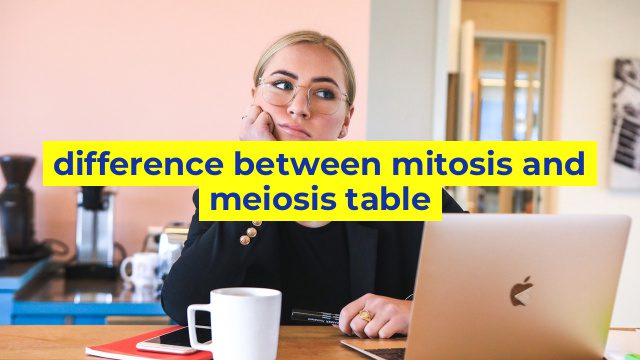The Fundamentals: Understanding Mitosis and Meiosis
Mitosis and Meiosis are two essential processes that take place in the human body. These two mechanisms are critical in ensuring that cell division is regulated, and genetic information is passed on properly. Although the two processes have some similarities, they have many differences. This article will take a closer look at the key differences between mitosis and meiosis.
Mitosis:
Mitosis is the process by which a single cell divides to form two identical daughter cells. This type of cell division is critical in growth and repair in the human body. Some of the key features of mitosis include:
- One cell is divided into two.
- The daughter cells are genetically identical to the parent cell.
- The process can be divided into four phases – prophase, metaphase, anaphase, and telophase.
- The outcome of mitosis is the production of two daughter cells that have the same genetic material as the parent cell.
Meiosis:
Meiosis is a type of cell division that happens only in the reproductive cells. This process is essential in ensuring the genetic diversity of species. Some of the key features of meiosis include:
- One cell is divided into four gamete cells.
- The daughter cells are not genetically identical to the parent cell.
- The process can be divided into two separate phases – meiosis I and meiosis II.
- Meiosis occurs only in specialized cells called germ cells, which are located in the gonads of the organism.
The Key Differences:
The primary difference between mitosis and meiosis is the number of cells produced and the genetic information they carry. The key differences include:
- Mitosis produces two daughter cells that have the same genetic material as the parent cell. In contrast, meiosis produces four gametes cells with half the genetic material of the parent cell, leading to genetic diversity.
- Mitosis occurs in body cells, while meiosis occurs in germ cells present in the reproductive system.
- Mitosis is used for growth, repair, and asexual reproduction. On the other hand, meiosis plays a crucial role in sexual reproduction.
In Conclusion
In summary, mitosis and meiosis are two essential processes responsible for maintaining the proper functioning of the human body. While these processes have some similarities, they have many differences. Mitosis produces two daughter cells with identical genetic material, while meiosis produces four gametes cells with half the genetic material of the parent cell. Understanding the differences between the two mechanisms is critical in understanding how organisms grow, repair, and reproduce.
Table difference between mitosis and meiosis table
| Mitosis | Meiosis | |
|---|---|---|
| Number of cell divisions | 1 | 2 |
| Number of daughter cells produced | 2 | 4 |
| Chromosome number in daughter cells | Same as parent cell | Half of parent cell |
| Genetic variation in daughter cells | Minimal | Significant |
| Role in organism | Growth, repair, and asexual reproduction | Production of gametes for sexual reproduction |
